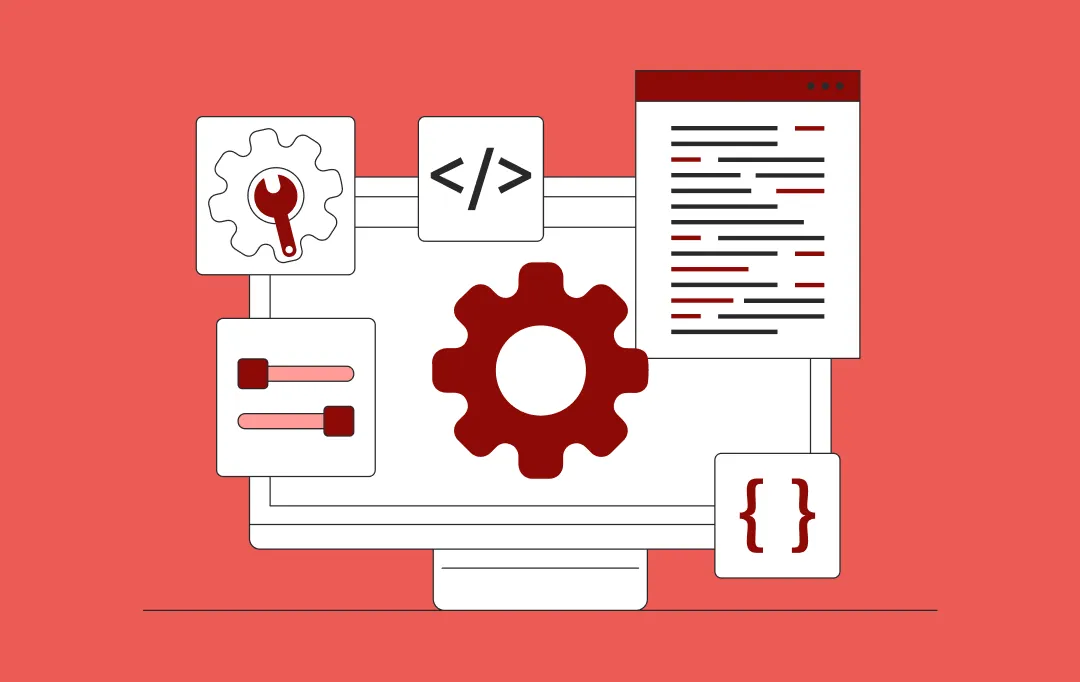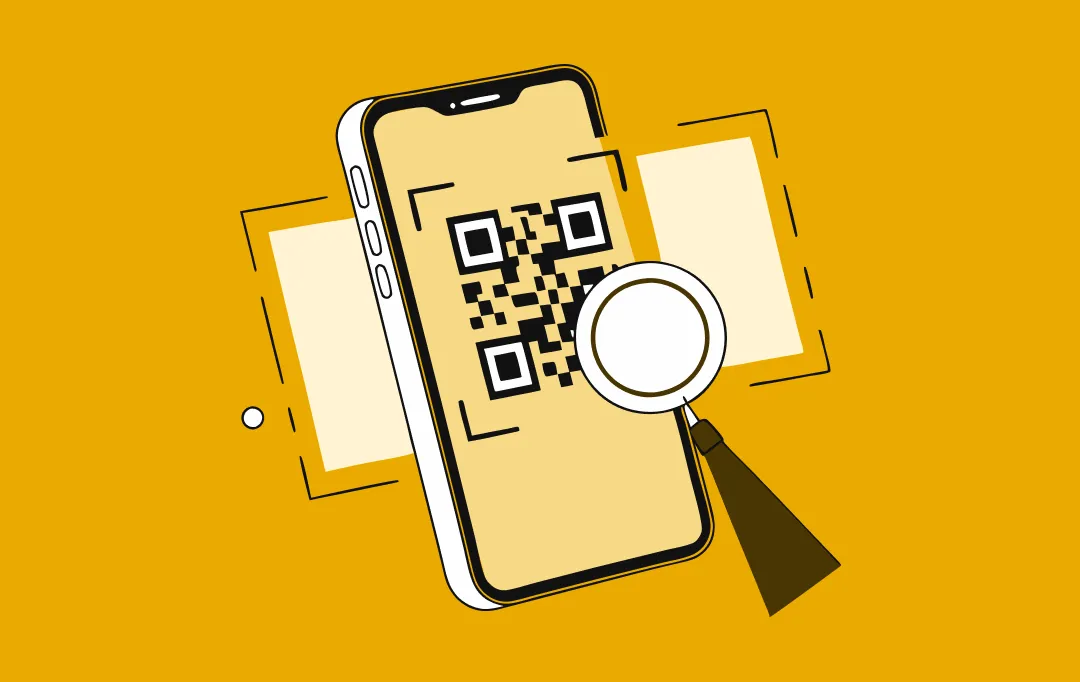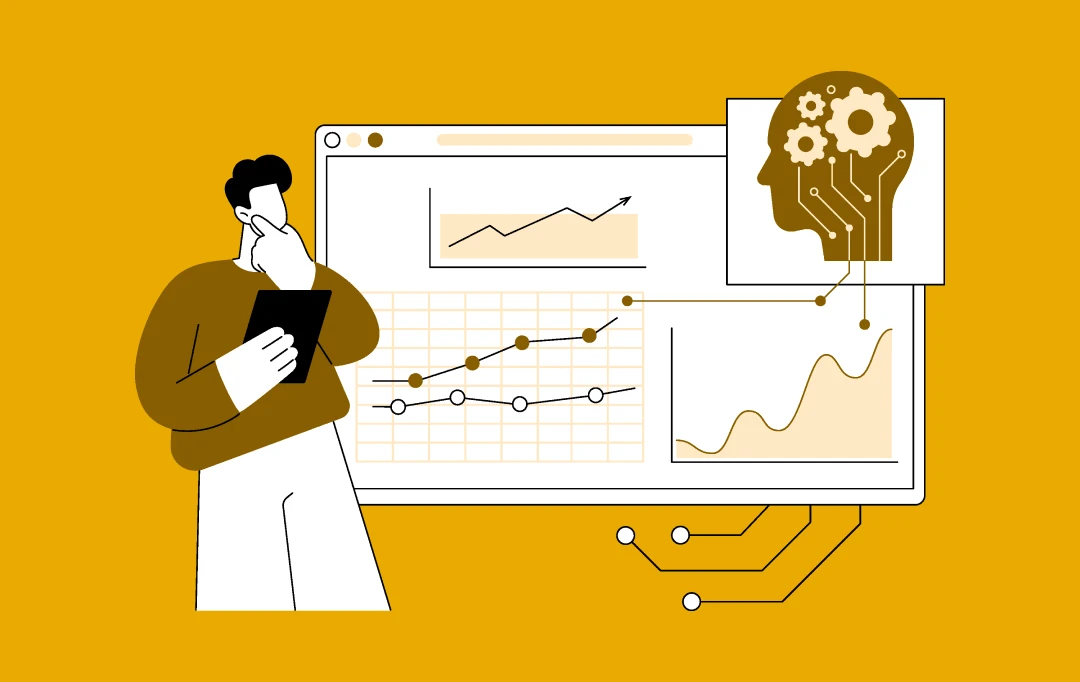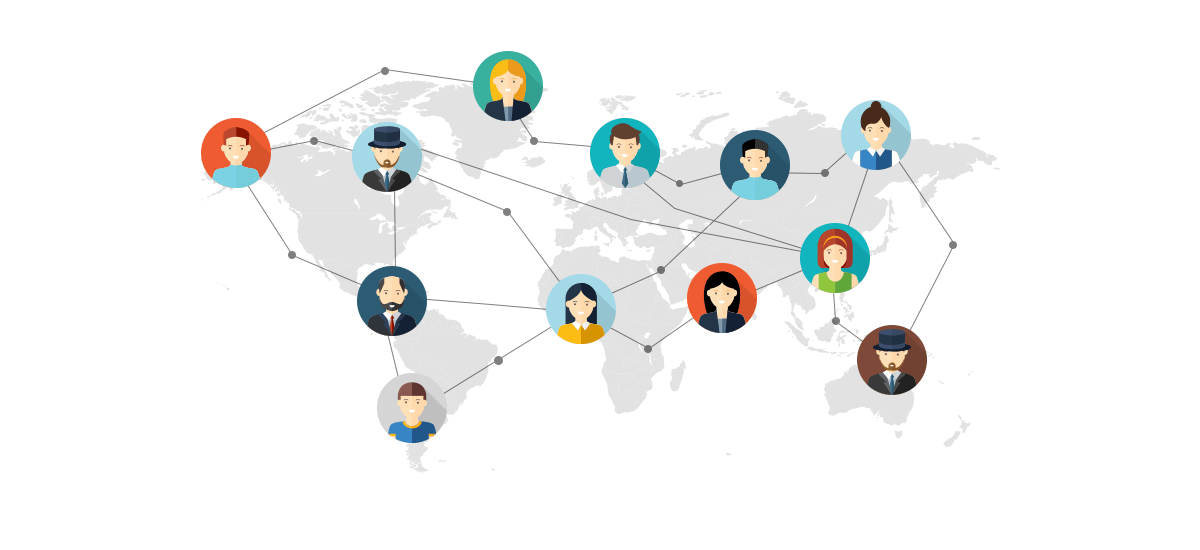- How Does Biometrics in Banking Work?
- What Types of Biometric Authentication Methods are Used in Digital Banking?
- Physical Biometrics
- Behavioral Biometrics
- Benefits of Biometrics in Banking
- Improved Security
- Enhanced Accessibility
- More Prominent Operating Efficiency
- Reduce Scam
- Biometric Authentication in Banking Example for the Financial Sector
- Fingerprint Scanning
- Face Verification
- Voice Recognition
- Iris Scanning
- Signature Recognition
- Finger Geometry
- Gait Recognition
- Use Cases Of Biometrics In Banking
- Customer Onboarding
- ATM’s
- Mobile Banking
- Future Trends in Biometric Authentication
- Are There Any Security Risks Involved in Using Biometrics in Banking?
- How to Enhance the Security of Biometric Technology?
- How Appinventiv can help you leverage biometric technology for your mobile banking or FinTech app
- FAQ’s
Key Takeaways
- Biometrics in digital banking boosts both security and user convenience, cutting down on the need for weak passwords and PINs that can easily be compromised.
- Top biometric methods include fingerprint, facial, voice, and iris recognition, with each one bringing its own special benefits for secure login processes.
- Using biometrics makes customer onboarding smoother, allows for easy re-authentication, and helps stop fraud and unauthorized access from happening.
- While biometrics make things more secure, banks still need to tackle risks like data breaches and deepfake attacks by mixing different biometric methods with strong data protection strategies.
Financial institutions require a secure authentication system such as biometrics in digital banking to protect sensitive information and enhance customer experience. Knowledge-based authentication methods, such as passwords, PINs, or OTPs, are easily forgotten, stolen, or compromised.
That’s why biometric verification for bank accounts is becoming increasingly integral to financial industry security platforms. Biometrics provides robust and reliable authentication for ATM, brick-and-mortar, and online transactions. It helps boost customer trust in banks and increase banking institutions’ brand reputation.
Customers today are more comfortable using biometrics in banking for safeguarding their payment details–ruling out traditional security methods entirely at this point. The necessity for strict identity verification due to the accelerating adoption of transactional technologies has made biometric use in banking crucial for financial institutions. The necessity for strict identity verification due to the accelerating adoption of transactional technologies has made biometric use in banking crucial for financial institutions.
How Does Biometrics in Banking Work?
Modern biometric security systems enable digital identity authentication and authorization. They are powered with special software that processes collected data and utilizes dedicated scanners, which can be small or large depending on the data type required.
To start the process, a scanner captures biometric information, converts it into a digital format, and matches it to an existing database. In the case of matching samples, the user is granted access; if not, access is denied, or the appropriate message is displayed for a system operator. This makes passwords redundant by introducing certain biometric security measures instead.
In summary, the successful implementation of biometric systems includes three steps: enrollment (collecting identifying data), storage (protection from unauthorized users), and comparison (verifying customer’s identity). Biometrics have considerably improved safety in banking operations while making them much more convenient for customers.
What Types of Biometric Authentication Methods are Used in Digital Banking?
Biometric authentication is based on the ability to verify user identities and authorize specific users by operating on the basis of unique physiological and behavioral characteristics, thereby enhancing the security and user experience in digital banking. Biometric authentication can be divided into two main groups: Physical Biometrics and Behavioral Biometrics.
Physical Biometrics
Physical biometrics involves the participation of the users to record some distinctive physical features. Here’s what it entails:
Fingerprint Recognition: It involves the use of the unique lines and crevices on the fingertip, usually in smartphones and ATMs, as a means of secure access.
Facial Recognition: It examines facial features, which include the distance between eyes and the shape of the nose, used in ATM and mobile banking apps to verify the user.
Voice Recognition: Recognizes individuals by their voice patterns, i.e., pitch and tone, and is utilized in voice banking and phone banking services.
Iris Scanning: Analyzes the individual patterns in the colored portion of the eyes, typically used in mobile devices and in high-security areas.
Behavioral Biometrics
Behavioral biometrics track user behavior patterns in order to have continuous, passive authentication.
Keystroke Dynamics: Examines typing rhythm, speed, and pressure. It is mostly utilized in online banking systems to detect fraud.
Mouse Movement Patterns: Records mouse movements and mouse clicks, typically used in web banking interfaces, and is used to detect abnormalities.
Device Usage Patterns: Monitors the interaction of a user with their devices and detects any unauthorized access.
Location Tracking: Tracks geographic location when making transactions and is leveraged to mark transactions that seem to be made out of place.
Navigation Patterns: Monitors the way in which a user navigates the banking applications and identifies abnormal behavior of usage.
Benefits of Biometrics in Banking
Biometric verification for bank accounts is increasingly becoming a fundamental part of the banking and FinTech industry, as it offers an increased level of security and convenience compared to traditional methods. Here are some key benefits to consider:

Improved Security
Biometric authentication in mobile banking applications (read about mobile banking app cost here) provides a secure, reliable way to bank on the go. This method is a welcome alternative to usernames and PINs as it offers stronger safeguards against fraud or erroneous access attempts. Moreover, biometric traits are impossible to reproduce digitally, creating an environment of heightened security for users’ financial accounts.
Enhanced Accessibility
Biometric authentication in mobile banking offers customers a more convenient solution than traditional passwords and physical security keys. Instead, customers can utilize their fingerprints, facial recognition, or voices to quickly and smoothly access their accounts. This removes the necessity of remembering complex passwords or the risks of losing physical security keys.
More Prominent Operating Efficiency
Biometric use in banking methods can offer a great advantage to customers when compared to traditional banking processes in terms of time saved. Additionally, banks that employ these forms of identification can reduce the need for manual reviews and investigations, subsequently increasing their operational efficiency.
Reduce Scam
Biometric technology in banking offers powerful protection against fraudulent activities like identity theft or account takeover. It works by detecting abnormalities in user behavior or biometric traits, which may indicate malicious intent. On notification of such incidences, banks can take swift action to mitigate any potential financial damage.
Biometric Authentication in Banking Example for the Financial Sector
![]()
Organizations or individuals looking to implement biometric security systems must first determine which data elements are most crucial for their plans. Since not all biometric identifiers are equally easy to capture and process, there are a few key considerations when making this decision:
Fingerprint Scanning
Banking institutions such as Bank of America have incorporated this type of authentication into their Android and iOS banking applications. Consumers are already accustomed to unlocking their smartphones with fingerprints and making purchases online with biometric fingerprint payment system, so it’s only natural that they would feel comfortable using similar technology to make financial transactions within the banking sector.
Fingerprint scanners have been gaining traction in places like Poland, where 2000 ATMs at bank branches and supermarkets use finger vein recognition technology, and multiple Japanese banks for access control of safety deposit boxes inside branches. In the near future, more companies will likely be using fingerprint authentication systems on mobile devices and physical locations.
Face Verification
The financial sector is increasingly seeking facial recognition technology in its banking systems. ‘Selfie banking,’ which has been available since 2016, allows customers to onboard quickly and easily by simply taking a selfie. It compares with the picture on their government-issued ID document; customers don’t have to visit a bank’s physical branch. AI-enabled technologies in the banking industry backed up by reliable biometrics provide both convenience and security.
Additionally, this technology can be used in online transactions, such as with Apple Pay, Selfie Pay, and AliPay, which offer facial biometric authentication in online banking for added protection. USAA was the first major bank to adopt facial biometrics back in 2015. Facial recognition software continues to grow in popularity within the financial sector across multiple platforms.
Voice Recognition
Voice recognition is a rapidly growing technology with many potential benefits for customers. Using AI and machine learning, speech modulation, accent, tones, and frequency are measured to create a voice print-a reference template used for customer identification. These voiceprints allow customers to replace passwords or PINs for increased security.
Voice biometrics are fundamentally different from passwords in terms of security. Unlike the plain text passwords, voiceprints are stored in an encrypted format, making them hard to decode even if someone were to access them. Furthermore, every time a fraudster engages with the voice-activated IVR system, their voice is recorded – enabling accurate detection and preventing further unauthorized attempts.
Iris Scanning
Biometric iris scanning is a prominent identity verification method used to identify individuals based on the distinctive patterns in their irises. It is recognized for its reliability, accuracy, and absolute security. Traditional authentication systems that rely on passwords, pins, and other knowledge-based methods can be vulnerable to hacking; however, iris scanning offers much greater protection of confidential information.
Earlier adopted primarily in airports for security screening purposes, iris scanning is now becoming more widespread with numerous programs set up at ATMs within the financial sector, such as Bank of America and the National Bank of Qatar. Furthermore, some countries even use technology for convenient border crossings without passwords.
Signature Recognition
The most common form of signature recognition involves static (offline) or dynamic (online) processing. Static recognition involves capturing a handwritten signature as a graphic image and comparing it to an existing copy. Dynamic processing collects data regarding time, rhythm, pressure, and other details when a touchscreen device provides a signature.
Finger Geometry
Biometric scanning with the latest finger geometry systems provides maximum accuracy and captures detailed information such as shape, surface, length, width, thickness, and distance between fingers. Cutting-edge three-dimensional imaging is used to capture every detail.
Gait Recognition
Gait is a unique locomotion pattern for every individual and is characterized by body size, speed of movement, stride length and width, angles, and other observed features. Gait-based authentication has applications in biometric identification systems; sports science; medical diagnosis and research, and many other fields. High-accuracy gait recognition cameras analyze these features to provide reliable verification results.
Use Cases Of Biometrics In Banking
Biometrics is becoming more prevalent in banking to authenticate customers and secure their assets. Instead of passwords, tokens, signatures, and PINs in-branch services, it can be used via mobile banking and ATMs. Banks are well-served by implementing biometric authentication in banking measures; it helps enhance customer service while providing higher security. Here are the applications of biometrics in banking.
Customer Onboarding
Financial organizations can streamline their customer onboarding process with biometric technologies. The Know Your Customer (KYC) verification that is inherently part of the onboarding process is often left for customers to perform in person, requiring them to visit a branch and present documents – this may take days or weeks. Technological advances pave the way for systems to offer streamlined services to customers; they expect convenience at all times. Biometrics in banking examples, such as facial recognition, offer reliability and security while allowing banking organizations to cut down on time spent onboarding customers.
ATM’s
Biometrics in banking ATMs has gained traction in multiple developed countries, with the two most popular authentication methods being PINs assisted by biometric traits like facials and fingerprints. This is due to their practicality when implemented in ATM systems – they provide convenience and accuracy and are space-efficient. Therefore, it is no surprise that more banks embrace biometrics in their ATMs.
Mobile Banking
As mobile banking becomes more integrated into daily life, especially among millennials, it offers users quick access to account management, payments, and other financial services. However, this rapid adoption has also led to increased vulnerabilities. With the surge in mobile banking usage, there has been a noticeable rise in fraud cases, highlighting a growing security concern. To combat this, facial biometric authentication in online banking can be employed to access banking services such as KYC monitoring and transaction identification. Banks must ensure that customer data is kept secure by employing advanced technologies from reliable sources, making biometric authentication in banking an effective protective measure.
Future Trends in Biometric Authentication
As technology advances, businesses are adopting innovative biometric solutions to improve authentication and protect sensitive data. Let’s check out some of its key trends:
- Passwordless Authentication: Biometrics is replacing traditional passwords, enabling secure logins through facial recognition, fingerprints, or voice authentication, enhancing both security and convenience.
- AI-Powered Biometric Authentication: Artificial intelligence enhances biometric security by detecting fraud attempts, learning user patterns, and adapting to changes in appearance or behavior over time.
- Multimodal Biometrics: Using multiple biometric methods (fingerprint, facial recognition, and voice) together increases authentication accuracy and reduces the chances of false positives or spoofing.
- Biometric Authentication for Payments: More banks and payment providers are integrating fingerprint and facial recognition for secure transactions, eliminating the need for passwords and reducing fraud risks.
- Behavioral Biometrics: Tracking user behavior, such as typing speed, touchscreen gestures, or mouse movements, provides continuous authentication, adding an extra security layer beyond traditional biometrics.
Are There Any Security Risks Involved in Using Biometrics in Banking?
Biometrics in banking systems offer higher security than other authentication systems; however, susceptibilities remain. Attackers are good at finding ways to trick biometric scanning tools, such as creating 3D models from photos of people off of social media and being able to use deep fakes. Additionally, the software that goes into biometric systems generates and stores confidential user data, so extra measures such as using cloud computing for banking, should be taken to protect it. For example, in 2015, when US government computers were hacked, the fingerprints of 5.6 million employees were stolen. As a result, integrating biometric technologies with other forms of authentication is an ideal approach.
How to Enhance the Security of Biometric Technology?
Biometric security systems offer strong protection, but they are not immune to breaches or fraud. To make them more reliable, organizations should combine advanced methods, secure storage, and professional expertise.
- Use multi-factor authentication by combining methods such as iris scans with fingerprints for stronger protection.
- Choose providers that use cloud-based storage with encryption to safeguard biometric data from unauthorized access.
- Hire experienced AI software development services to design and implement secure biometric systems.
- Partner with specialists who can minimize errors and reduce vulnerabilities during deployment.
How Appinventiv can help you leverage biometric technology for your mobile banking or FinTech app
Biometrics in financial services is changing the way fintech organizations are going to operate in the coming years, offering a path to not just enhanced security but also promoting sustainable banking practices by streamlining processes. If you’re looking for more opportunities to help your users verify their identity quickly and securely, biometrics in digital banking can be an effective solution. Appinventiv has worked with a multitude of FinTech companies and leading global banks delivering top notch fintech app development services to our clients.
Implementing such a system takes significant technical expertise. At Appinventiv, we provide professional customized solutions to help businesses integrate biometric technologies into their business models and benefit from them the most. Reach out to us today, and let’s explore what we can do together!
FAQ’s
Q. What is Biometrics in Digital Banking?
A. Biometrics is an integral element of digital banking. This technology uses physical and behavioral characteristics, such as fingerprints or facial recognition, to identify customers and grant them access to their accounts through online channels. It provides an added layer of security while delivering a positive user experience. Biometric authentication in banking helps curtail fraud and improve overall banking safety.
Q. How secure is biometric authentication in digital banking?
A. Biometric authentication provides improved security compared to the traditional password-based approach in the digital banking sector. Despite this enhanced protection, biometric data might still be vulnerable to theft or manipulation, as successful attacks have occurred.
Q. What is the cost of biometric banking?
A. Biometric technology adoption in banking may involve an initial investment in hardware, software, and infrastructure. Nonetheless, depending on factors such as the size of the institution, the type of biometric technology used and deployment scope, long-term cost savings can be realized due to fraud reduction, operational efficiency improvement and elevated customer experience. Therefore, the long-term benefits of biometric technology adjustments often outweigh the biometric authentication in banking cost.
Q. What are the advantages of using biometrics in digital banking?
A. In digital banking, there are various advantages of biometrics in banking to users, such as improved security, convenient and speedy access to accounts, decreased risk of identity theft and fraud, plus an enhanced customer experience. Additionally, biometrics in digital banking eliminates the need for clients to memorize complex passwords, making the login process much simpler and more user-friendly.
Q. What regulations affect biometrics in banking?
A. Key regulations affecting biometrics in banking
- General Data Protection Regulation (GDPR – Europe)
- California Consumer Privacy Act (CCPA – US)
- Country-specific privacy laws
- PSD2 (Revised Payment Services Directive – EU)
Q. Can biometric authentication replace passwords completely?
A. No. Biometrics improve security and convenience, but cannot be reset if compromised. Banks use them as part of multi-factor authentication alongside PINs or tokens.


- In just 2 mins you will get a response
- Your idea is 100% protected by our Non Disclosure Agreement.

How Much Does It Cost to Build a Fintech Super App
Key Takeaways Building a fintech super app costs between $40,000 and $400,000, depending on modules, compliance, and integrations. Backend architecture, compliance, and third party APIs are the biggest cost drivers in any super app build. AI, lending, investments, and insurance instantly push the project into the enterprise cost range. Hidden costs like audits, cloud hosting,…

A Complete Business Guide To Wealth Management Software Development
Key takeaways: The "great wealth transfer" is redefining client expectations. Legacy platforms cannot meet the digital-first demands of the next generation of HNWIs. Modern wealth management software is not an IT expense. It is a core business driver for operational efficiency, client retention, and scalable compliance. Artificial intelligence and machine learning are essential for delivering…

How to develop a high frequency trading software? Process, features, costs
Key takeaways: Build process, not just code: HFT success = a staged roadmap (discovery → architecture → MVS → core build → test → launch → monitor) where decisions are validated with real latency and risk data at every step. Architecture beats hype: Deterministic low latency comes from co-location, kernel bypass/FPGA, clean market-data pipelines, and…





































